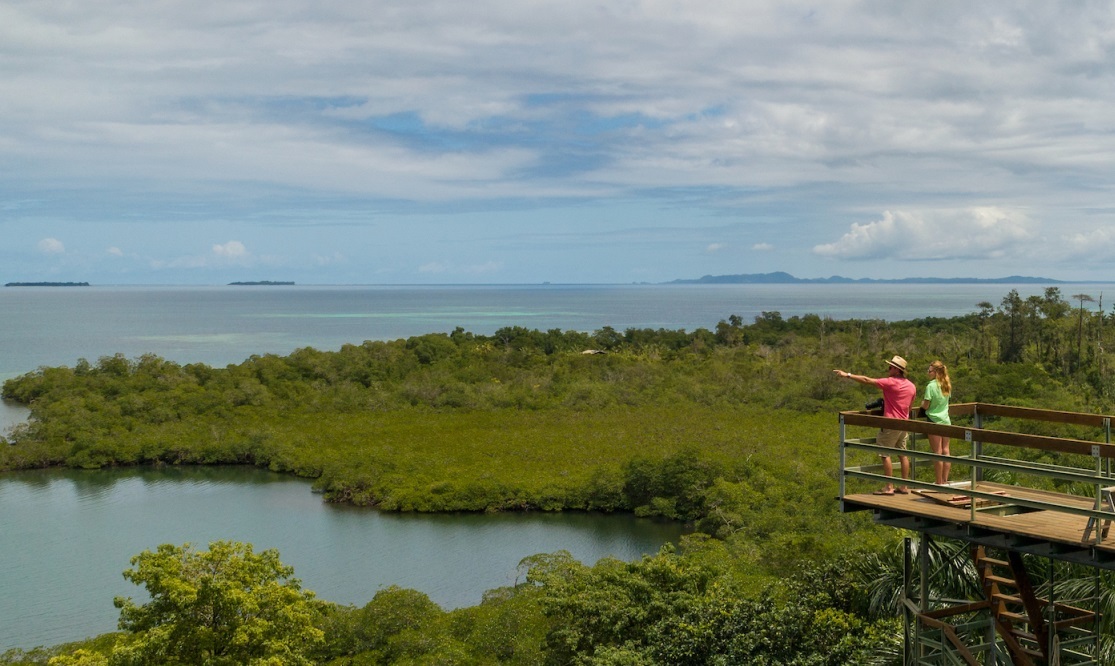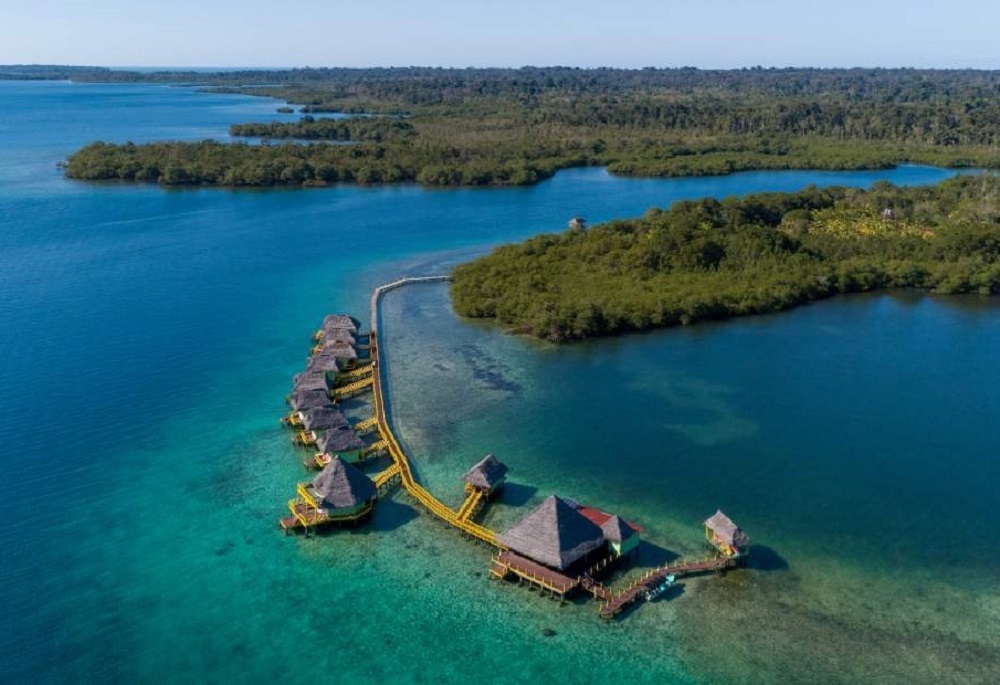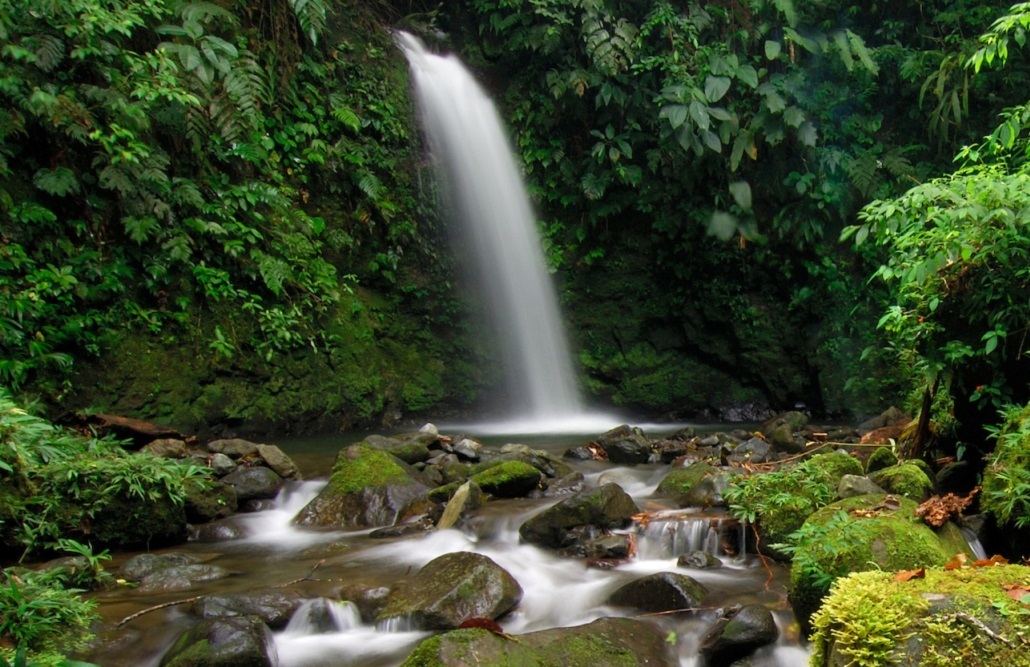The country at the crossroads of two Americas is attractive due to its combination of a cosmopolitan city and authentic nature with impenetrable tropical forests, desert and beautiful beaches. Panama has a lot to explore and wonder. In the article we reveal the features and some secrets of this amazing country.
Population and religion
The main religion of Panama is Catholic Christianity. This is about 80% of the population. The rest are Protestants and a small percentage of other religions.
The country is mainly inhabited by Panamanians. But there are diasporas, for example the American one, which live separately and consist mainly of military personnel.
Life hack: Try to be careful with locals when talking about the Panama Canal or political topics.
Kitchen
Panamanian cuisine is creative and varied. It is influenced by Spanish and African gastronomic traditions, but this only enhances the local recipes.
The best restaurants with world-class chefs are concentrated in the Old Town area of the capital.
Breakfast in Panama typically includes eggs, meat, tortilla, fruit, and coffee with sweet, toasted Hojaldras bread.
It is worth trying the classic ceviche made from raw fish marinated in citrus juice and chili pepper. Ropa Vieja is very tasty in Panama - spiced beef and traditional Panamanian soup known as sancocho.
When visiting the country, always leave room for seafood and tropical fruits, the variety of which here is pleasantly surprising.
Life hack: Relax and catch the Panama vibe. Here everything moves at a measured pace and the concept of punctuality is vague. So it is useless to wait for lightning-fast resolution of issues or fast service in restaurants. Learn to enjoy the local calm flow of life.

Language
Although English is widely spoken throughout the country, especially in Panama City and Boquete, the population mainly speaks Spanish.
Lifehack: Learn a few basic Spanish phrases to win over the locals. Remember to be polite and greet people “buenas” and thank them “gracias”.
Currency
The official currency of the country is the Panamanian Balboa. But American dollars are also in use here.
Lifehack: Take enough cash with you, especially if you go to an area where there are no ATMs, for example, in the San Blas archipelago. Small bills are ideal for tipping and going to markets.
Climate
The country's tropical climate means there are two seasons: hot and dry from December to April and hot and humid the rest of the year. Although the amount of precipitation depends on the coast. Showers occur more often in the afternoon. They are short but sharp. And then the scorching sun appears again.
It is warm here all year round, and day and night divide the day in half. Dawn is around 6am and sunset is around 6pm. Sunset lasts only 15 minutes.
Life hack: Even though you are going to the tropics, in addition to light clothes and shoes, take something warm for hiking and to keep warm under the freezing air conditioners.
How to get there
You can get to Panama by plane through European countries such as the Netherlands, Spain, Portugal, and also through Cuba or the USA.
Several international bus lines, such as Tica Bus, operate throughout Central America. You can take a bus to Panama from Costa Rica.
The country has no such connection with South America. Instead of a road, Panama and Colombia are connected by the Darien Gap with its impassable jungle, marshy swamps and poisonous snakes.
It is convenient to travel around the country to attractions by taxi. Uber has the most affordable rates. You can rent UberEnglish for non-Spanish speakers, and UserAssist is suitable for people with disabilities.
Life hack: Before taking a taxi, find out the local rates and agree with the driver on the exact cost of the trip. After all, there are no meters in cars, and prices for tourists are greatly inflated.
Cities and coasts
The most populous region of Panama is in the eastern part of the country. The capital is located in the province of Panama of the same name and is the center of the entire region. From here you can easily access the Caribbean coast, discover the early history of Panama in the city of Colon and visit the indigenous communities of the San Blas Islands.
In the central part of the country lies the province of Cocle, with many secluded sandy beaches and quaint mountain villages.
The province of Herrera is a non-tourist destination with its own charm. The city of Chitre serves as the commercial center of the region. The small nearby town of La Arena is known as the craft center of Panama.

In the province of Los Santos there is a town called Las Tablas, which hosts an annual carnival. On the outskirts of the Azuero Peninsula lies the picturesque town of Pedasi. It is popular with foreigners for its fine dining and surfing beach, Playa Venao.
The province of Veraguas is unique in Panama in that it borders both the Pacific Ocean and the Caribbean Sea at the same time. The village of Santa Catalina is known throughout the world as a surfing paradise. It is also easy to find the quiet town of Santa Fe, which is popular for its waterfalls.
On the western side of Panama is the province of Chiriqui. Small villages and towns are scattered throughout the highlands and lowlands. The capital of the province is the city of David. The picturesque town of Boquete with its fine restaurants is a half hour's drive away.
Panama's only volcano, Baru, is also located in this province. In the Gulf of Chiriquí, you can snorkel along the coral reefs or go on secluded hikes.
And finally, Bocas del Toro is a province in the Caribbean that occupies part of the mainland and nine islands. It is the most popular destination in Panama due to its stunning beaches. Bocas, as the locals affectionately call it, has delicious Afro-Caribbean cuisine, vibrant nightlife and incredible nature.

What to see?
Casco Antiguo in Panama City
The lively Casco Antiguo (old town) district is Panama City's historic quarter with its own charm. The area is ideal for walking and exploring the local cuisine.
Visit the Panama City Cathedral, located in the main Plaza Mayor square. And the Church of San Jose, famous for its golden altar.
Stroll to Plaza de Francia where Las Bovedas is located, a monument that was once used as a defense against pirate attacks. Next, visit Paseo Esteban Huertas, which offers excellent views of the city and bay. Nearby you can find a stone arch in Arco Chato, which is the remains of a church built by Dominican friars. Stop by the Panama National Theater to see stunning ceiling murals painted by Robert Lewis.
Life hack: If you are going to Panama City, then bring some decent clothes, as there is an unspoken dress code here. And if in other cities you can wear whatever you want, then in the capital, beach style and a naked torso will look out of place.
Metropolitan Park
Right in the center of Panama City is the huge Metropolitan Park Nature Reserve. This is the only park in the world with wildlife and rainforest in the middle of a metropolis.
Bocas del Toro
Bocas is a popular tourist destination not only because of the island's luxurious beaches. Here you can take a scientific dive at the Smithsonian Institution if you are into diving. Or explore the Nivida Bat Cave.
Santa Fe National Park
The park is famous for its waterfalls. Hiking routes are provided for tourists, the most popular of which is the hike to Alto de Piedra. But the infrastructure is lame.

Panama Canal
The country's most famous landmark is the Panama Canal. It is designed to reduce travel times for ships between the Pacific Ocean and the Caribbean Sea. This engineering marvel uses a system of locks to lift ships 25 meters above the canal level. At the Miraflores Visitor Center you can watch the ships move from just a few meters away.
The canal can also be seen from the center of Agua Clara in Colon. From here you can canoe on the Chagres River and visit the local Embera community.
From Panama City, you can take a day trip to cross the canal to see the locks for yourself.

Coiba National Park
Coiba Marine Park is a nature reserve. It was once a penal colony. Access to the island was limited, allowing most of the area's natural resources to remain intact.
Here you can dive to the Bahia Damas reef and see manta rays, whales and hammerhead sharks. And from December to April - whale sharks.
You can take a whale watching tour in the park. Or go hiking through the rainforest, where there are many wild monkeys, crocodiles and iguanas.
Fun fact: Humpback whales are quite funny - they throw their entire body out of the water and flap their fins on the surface of the water to communicate with other whales. The sounds they make are complex and harmonious. From grunting and growling to whistling.
Twice a year, Panama attracts thousands of humpback whales, making it a popular destination for viewing these enormous mammals. September and February are the best months to see them.

Baru Volcanoes National Park
Volcano Baru is the highest point in the country, with a height of 3474 meters. This is the only place in the world from which on clear days you can see the Atlantic and Pacific oceans at the same time. Most routes to the summit pass through the town of Boquete. From there you can get to the peak by SUV in 30 minutes.
In the province of Chiriquí, where the volcano is located, some of the most expensive coffee in the world is grown at high altitudes. Tours are offered to the plantation.
And for thrill-seekers there are zipline routes. Adrenaline surges are guaranteed.

Darien National Park
This is the wildest area of Central America and one of the most protected.
Santa Cruz de Cana, a former mining town, is good for bird watching. And the Perre or Rancho Frio station offers routes for exploring the wilderness.
All walks in the park are best done with an experienced guide.
Life hack: Be careful while walking in nature. When hiking on jungle trails, watch out for venomous snakes. And enter bodies of water only when you are sure that there are no crocodiles there.

Indigenous communities in Panama
There are 7 indigenous communities in Panama: Guna, Naso Tier Di, Ngabe, Bugli, Bri Bri, Embera and Vunaan. Most of them live in protected areas, practice ancestral forms of government, preserve dances, songs, rituals and adhere to their deep cosmological beliefs and cultural expressions.
They can be visited whether they are by the sea like Guna, high in the mountains like Ngabe or deep in the rainforest like Embera. These indigenous communities love to share their culture with visitors and are very friendly.

Night life
Panama's nightlife mainly takes place in two sectors of the city: the downtown business district and the Spanish colonial buildings of Casco Antiguo.
Lifehack: Look for designated areas for smoking. Smoking is strictly prohibited here in public places, hotel rooms, and at work. Smoking in an unauthorized place will result in a fine. The sale and import of wipes is prohibited, and alcohol and drugs are still stricter.

Safety
Although Panama is considered one of the safest countries in Central America, pickpocketing is common in the crowded areas of the capital.
It's best to stay away from poorly lit streets and avoid wandering around shady areas alone after dark. Don't carry all your credit cards or wads of cash with you at once. And it is better to withdraw money from a bank during the daytime.
Life hack: Keep copies of your documents with you. The police often check foreigners' passports and ask them to carry identification. But it is better to leave the documents in a safe place and have copies with you.
Visa
Russians, Belarusians and Ukrainians do not need a visa to travel to Panama. Upon arrival in the country, they will put a stamp if you have a return ticket, your address in the country and a passport valid for a few more months. But citizens of Azerbaijan, Armenia, Kazakhstan, Kyrgyzstan, Tajikistan, Turkmenistan, Uzbekistan should think in advance about a visa to Panama, because it will take at least a month to issue it.
The cost of travel
Accommodation in the country is relatively inexpensive. You can rent a cozy room in Panama City for a day for $30. But an entire apartment or hotel will cost more – around $80-100. In a good restaurant, dinner per person will cost $30-35.
Lifehack: If you are going to Panama to have fun, then plan your trip in advance. At least for a few weeks.
Panamanians constantly hold parties, fiestas and carnivals. There are also traditional holidays such as Easter, Christmas and New Year. On these days, shops and offices close and locals flock to the beach. Demand for hotels is increasing and prices are creeping up.








 ios
ios
 android
android

 USD - $
USD - $  EUR - €
EUR - € 
 ios
ios









